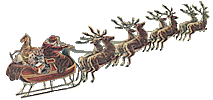PAGE 078:
CHAPTER III
made, however, of any consequence, were at the
head of the navigation of Hudson's river, and on the
south-west point of the island Manhattans, in the
State of New York, where they established themselves in the beginning of the seventeenth century.
The first emigrants were men of a bold, enterprising turn, whose chief motive for leaving their
native land was, no doubt, the acquisition of wealth.
They came under a patent from their High Mightinesses the lords States General of the United Netherlands, and a few years after (in 1621) were placed
under the care of the Dutch West India Company,
to whom the States General, for the purpose of
promoting the settlement of a colony here, had then
made a grant of the country.
Having been educated within the pale of the national Reformed Church, they brought with them a
strong attachment to its doctrines, worship, and
government; and, however deeply interested they
were in secular pursuits, it is certain, that very soon
after their arrival, they took measures for enjoying
and preserving among them, in its purity, the religion of their fathers.
The authentic records of the Church of New-York commence with the year 1639; but there is
|
PAGE 079:
CHAPTER III
8ome reason to believe that it was organized as
early as 1619.* — Whether or not, in the infancy of
this settlement, a house was built expressly for the
celebration of public worship, the writer is not
informed. There was one erected, in 1642, at the
south end of Fort Amsterdam, and another, before
1664, on the farm (now called the Bowery) of
Governor Stuyvesant, — which was built at the
Governor's own expense, and in which his remains
were afterwards interred.**
* Among the manuscripts of Dr. Livingston, there is one containing a few observations upon the Dutch Church, in which he
says, "documents of a private nature render it certain that a
considerable church was-organized in that city, as early as 1619."
— In another, he affirms, that a document "is still extant, containing the names of members, in full communion, of the Church
of New-York, dated 1622."
**
Having noticed above, the first Dutch Churches in New-York, it may not be amiss to present here, a description of those
in use in the year 1756.
Judge Smith, who wrote his History of New-York about that
time, says, — "There are still two churches, in which religious worship is performed in that language. The old building," (in
Garden Street,) "is of stone, and ill built, ornamented within by
a small organ loft and brass branches. The new Church,"
(what is now called the Middle Church) "is a high, heavy edifice,
has a very extensive area, and was completed in 1729. It has
no galleries, and yet will perhaps contain a thousand or twelve
hundred auditors. The steeple of this Church affords a most
beautiful prospect, both of the city beneath, and the surrounding
country."
|


![]() Copyright © 2013, InterMedia Enterprises
Copyright © 2013, InterMedia Enterprises